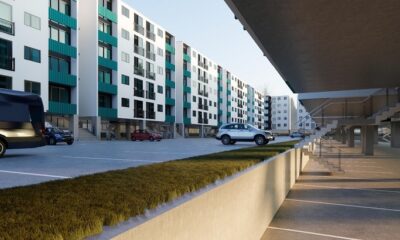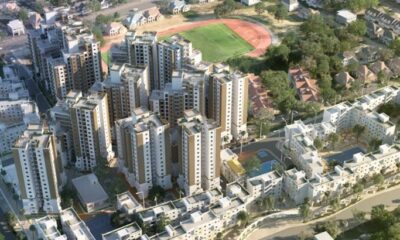Residential Projects
Disquiet in Nairobi as Zoning Rules Disrupt Posh Estates
High-rise buildings are now common in low-density zones.

Simmering disquiet in Nairobi’s top estates has surfaced again with residents seeking the arrest of developers who abuse zoning guidelines to erect illegal buildings in the areas.
Residents of Kileleshwa, Lavington, Kilimani, and other estates that earlier held strict codes that outlawed high-rises are now facing the full impact of the review of the Nairobi County zoning guidelines to allow for construction of multi-storey flats in low-density zones due to rapid population growth in the city.
While this is a welcome development for many ‘outsiders’, residents who settled in the areas under the previous zoning ordinances have lamented that the mushrooming high-rise apartments have seriously overwhelmed and breached the privacy of low-rise home dwellers – which is ‘totally unacceptable’.
According to a Kileleshwa homeowner only identified as Florah, the estate is now a pale shadow of its former self due to the rising number of substandard apartments that are towering above the imposing homes that have dotted the estate for many years.
“Houses in Kileleshwa were cool, not as tall and the place was not crowded. But now, even people living in these apartments can hardly be trusted to be upright residents,” she says.
This is quite a valid concern considering that a person in the higher floors of a multi-storey apartment can clearly see whatever happens in the next-door compound that has a maisonette or bungalow.
Anybody with money
John Mwangi who runs a property in Lavington says the revised Nairobi zones guide has dealt a death blow to exclusive suburbs as anybody with money can now buy a small plot and erect a tall apartment.
“This will result in highly congested high-rise buildings within an area that was initially planned for single family homes hence diminishing the exclusivity of the affected estates,” Mwangi said in an interview.
READ: Hard times for city elders as mallets fall on bungalows
In some highly emotive cases, builders are increasingly circumventing the estates’ building and design regulations to put up mix-use developments sparking court battles between residents and developers.
Kibwezi MP Patrick Musimba, for example, had recently moved to Court to stop a Chinese company from erecting a commercial building on Acacia Drive Karen on the grounds that the property was likely to disturb the peace of Karen residents.
However, Justice Samuel Okong’o dismissed the application, saying it had no merit and that the orders sought by the MP if granted would be in vain.
RELATED: State Scraps Floor Limit for Nairobi High-Rises
Justice Okong’o noted that China Railways No 10 Engineering Group Co Ltd in its response said the construction works for the commercial engineering office complex had been completed.
Invasion of territory
To avert similar situations, residents of Old Muthaiga and Runda, the few remaining exclusive zones of Nairobi, have been fighting to stop what they perceive to be a calculated invasion of their territory.
In February last year, members of Runda Residents Association staged a spirited fight to stop the construction of a link road to Kiambu, saying the project was illegal and disastrous.
The residents argued that the project, if allowed to proceed, would open Runda to traffic congestion while rendering the neighbourhood an easy target for terrorist attacks.
In the Old Muthaiga estate, armed policemen were last year stationed at the roundabout exit next to Muthaiga Post Office (Limuru Road), as well as Thika Road Muthaiga exit to stop motorcycles, pick-ups, matatus, and trucks from using the public road that links Limuru Road to Thika Road.












